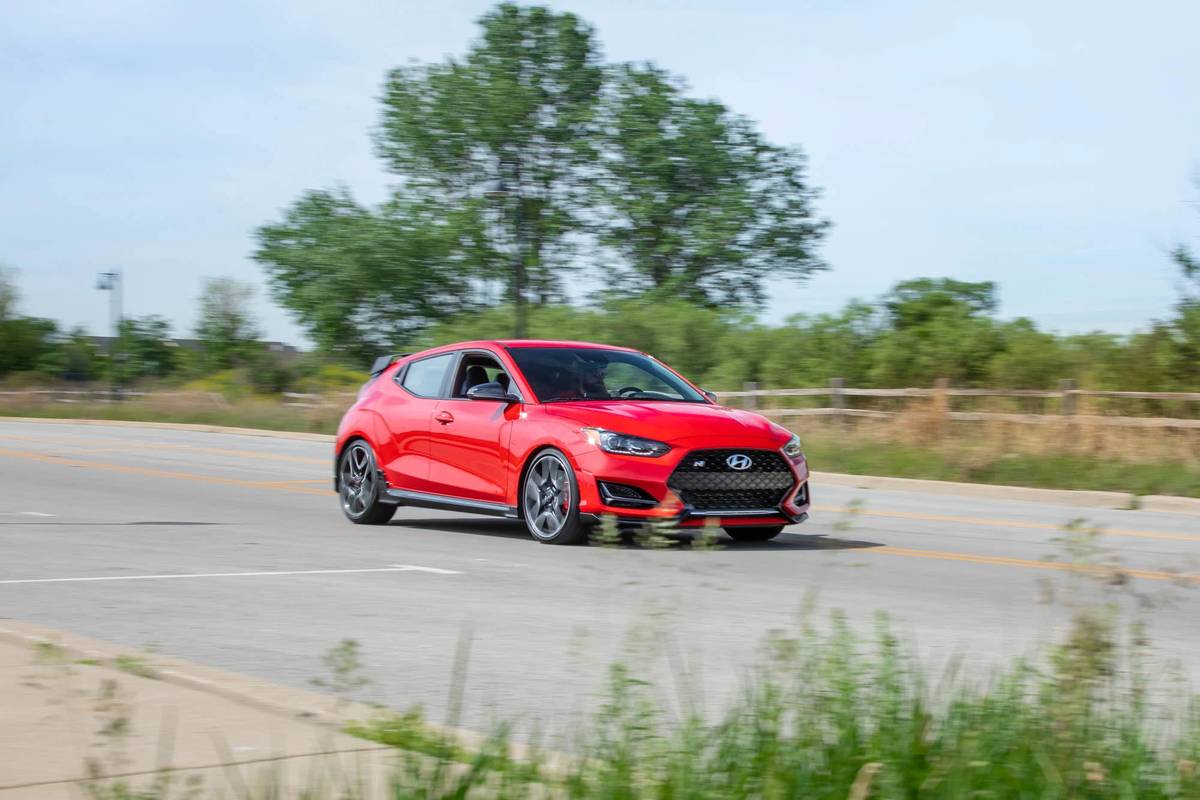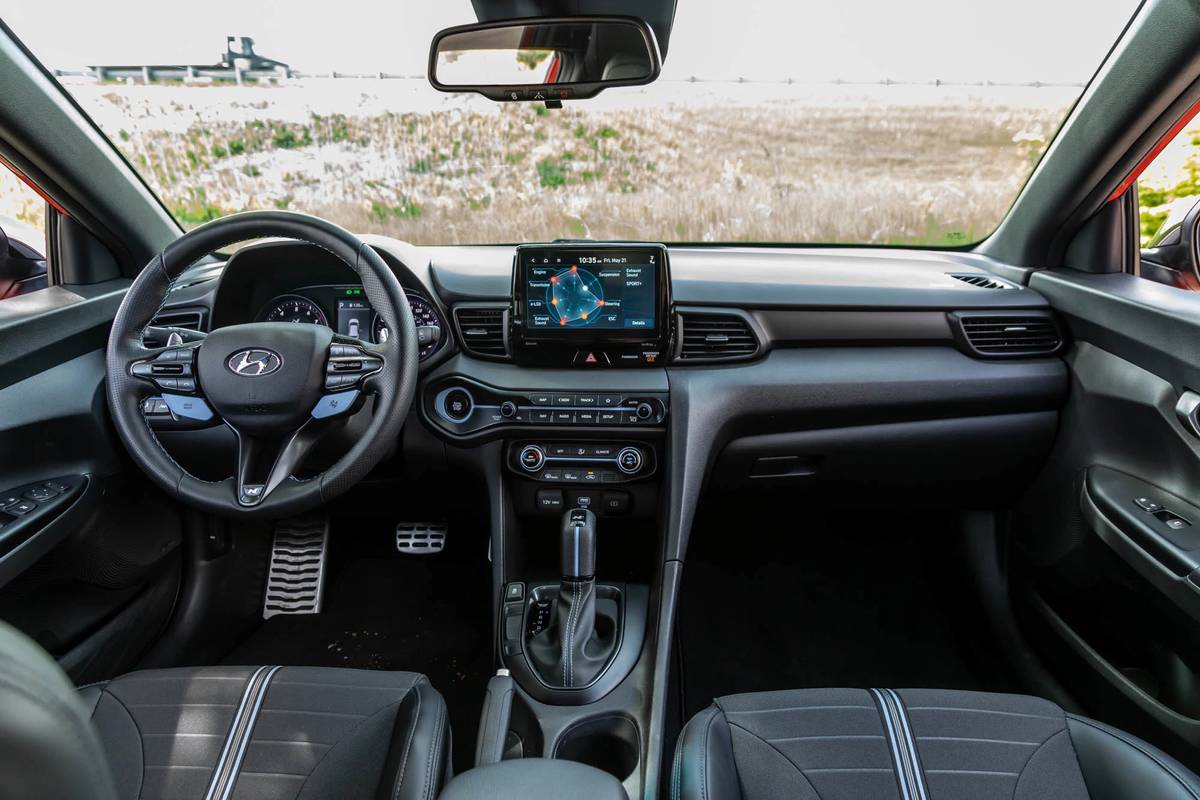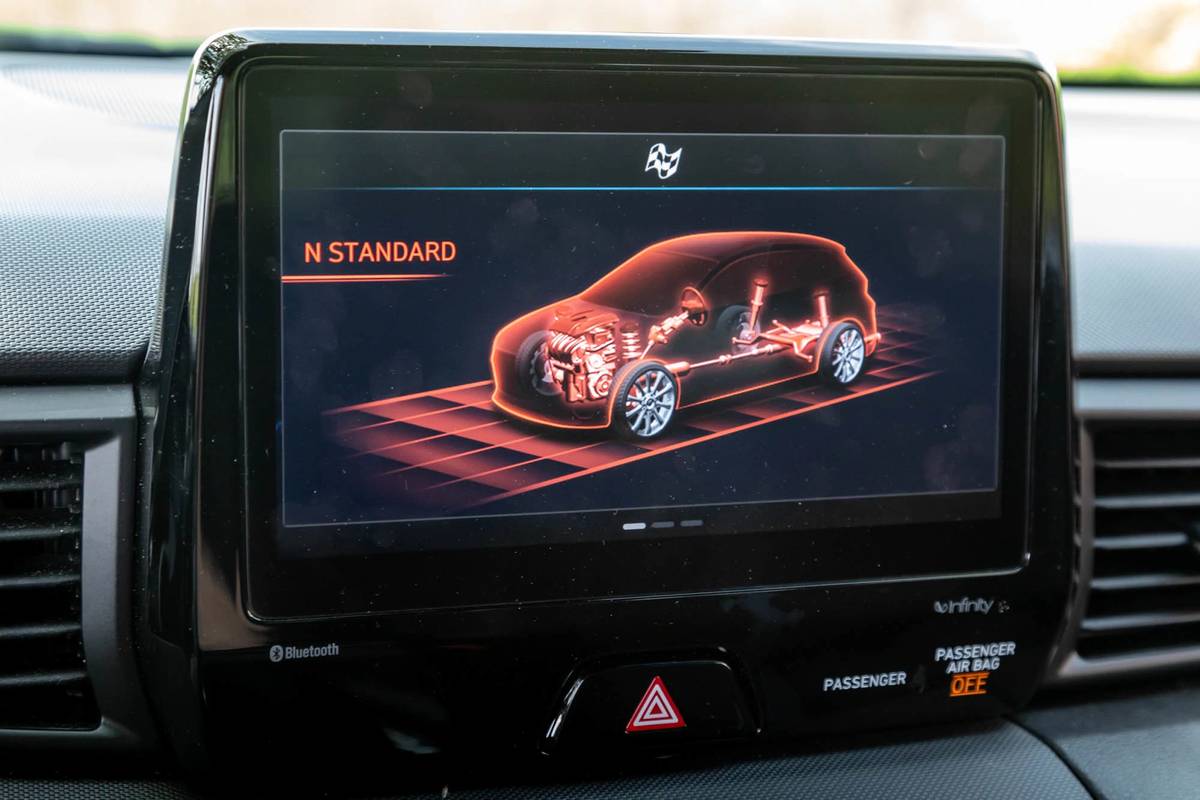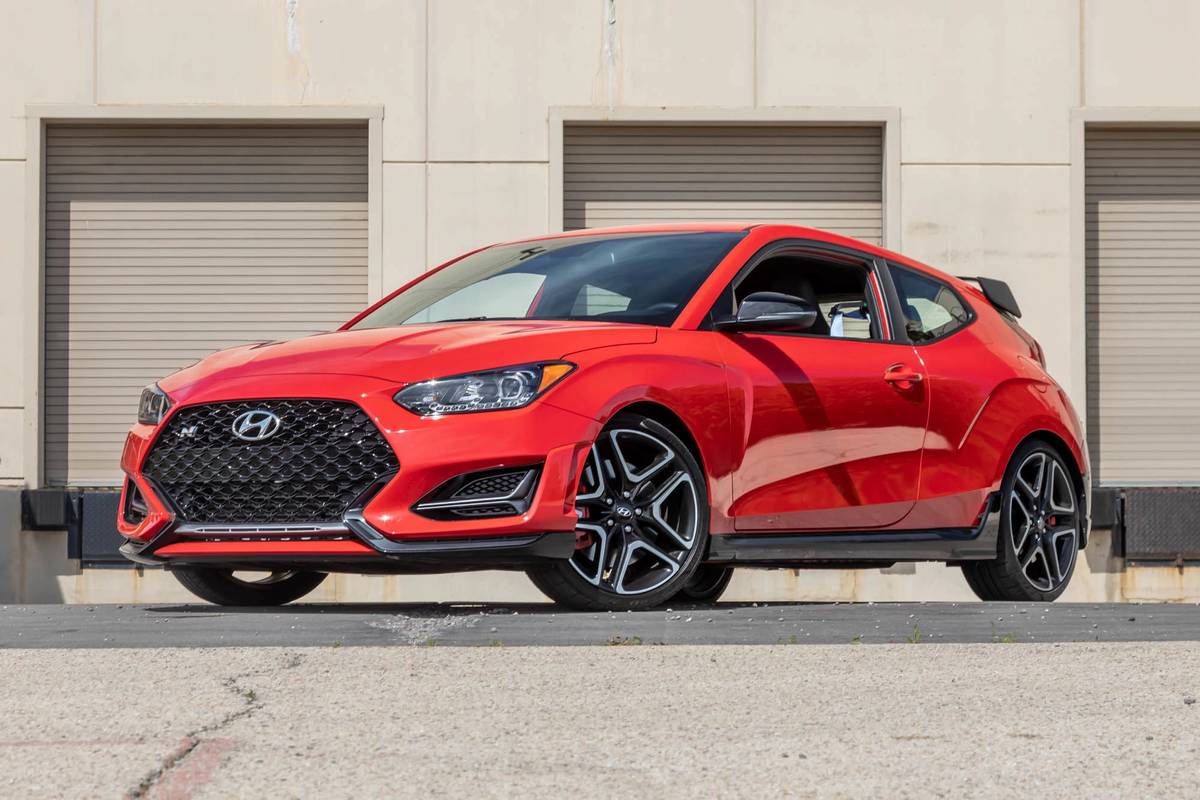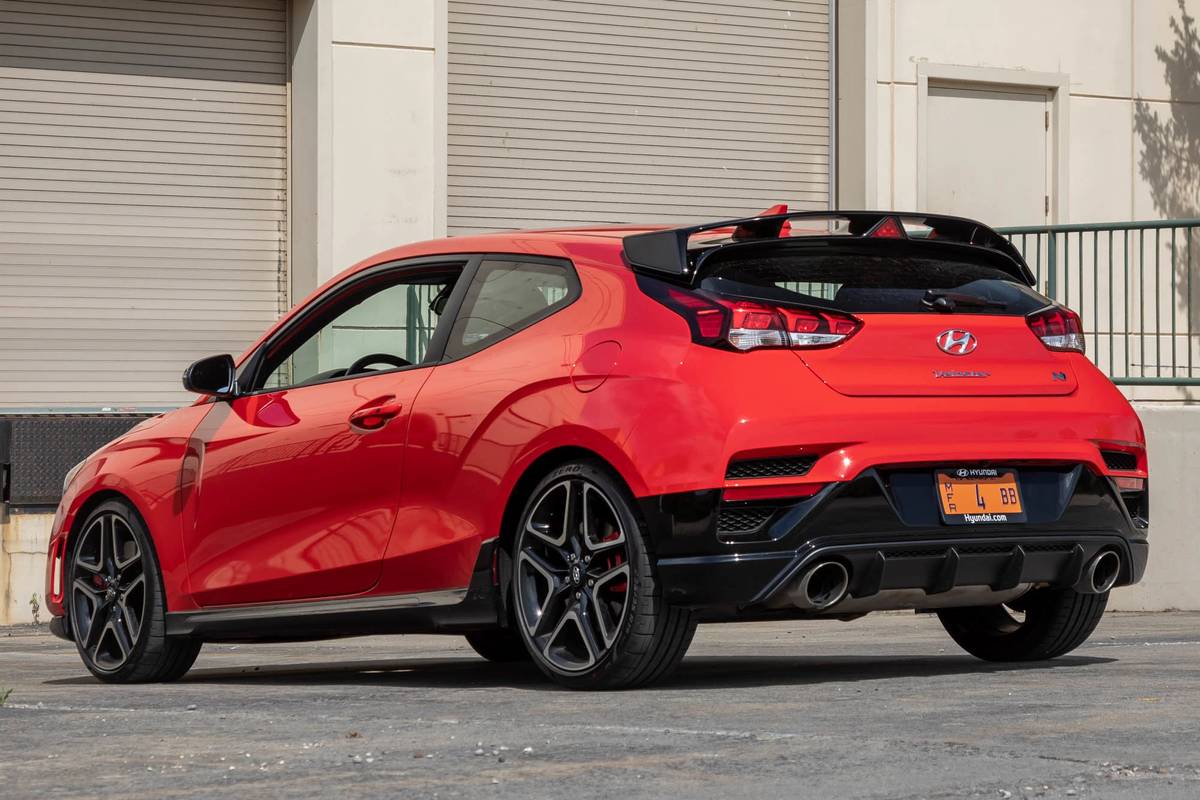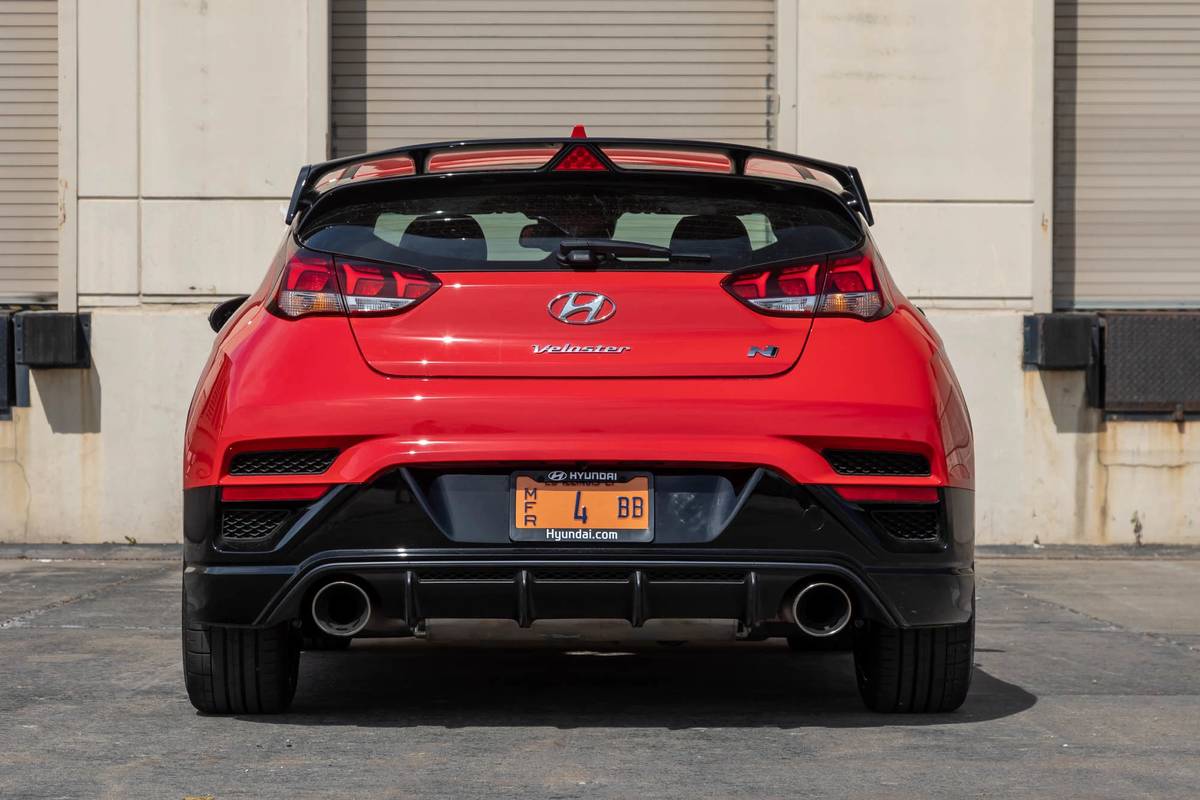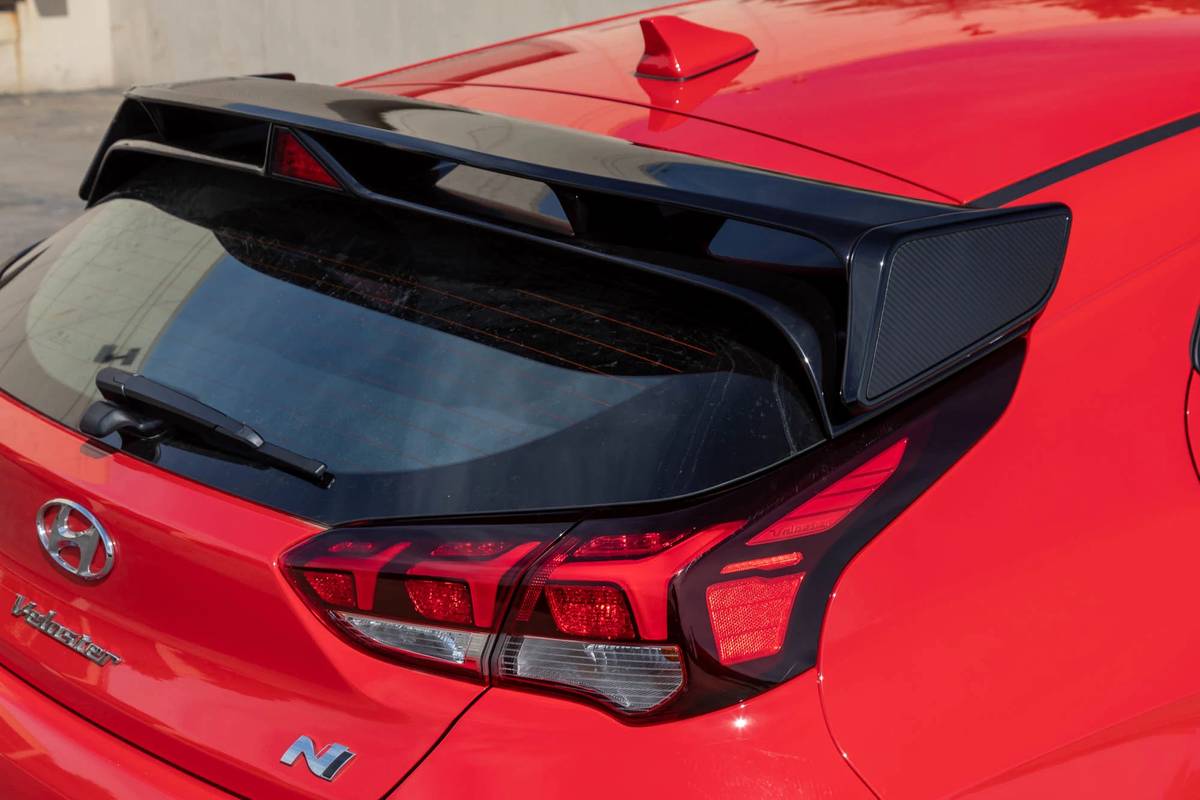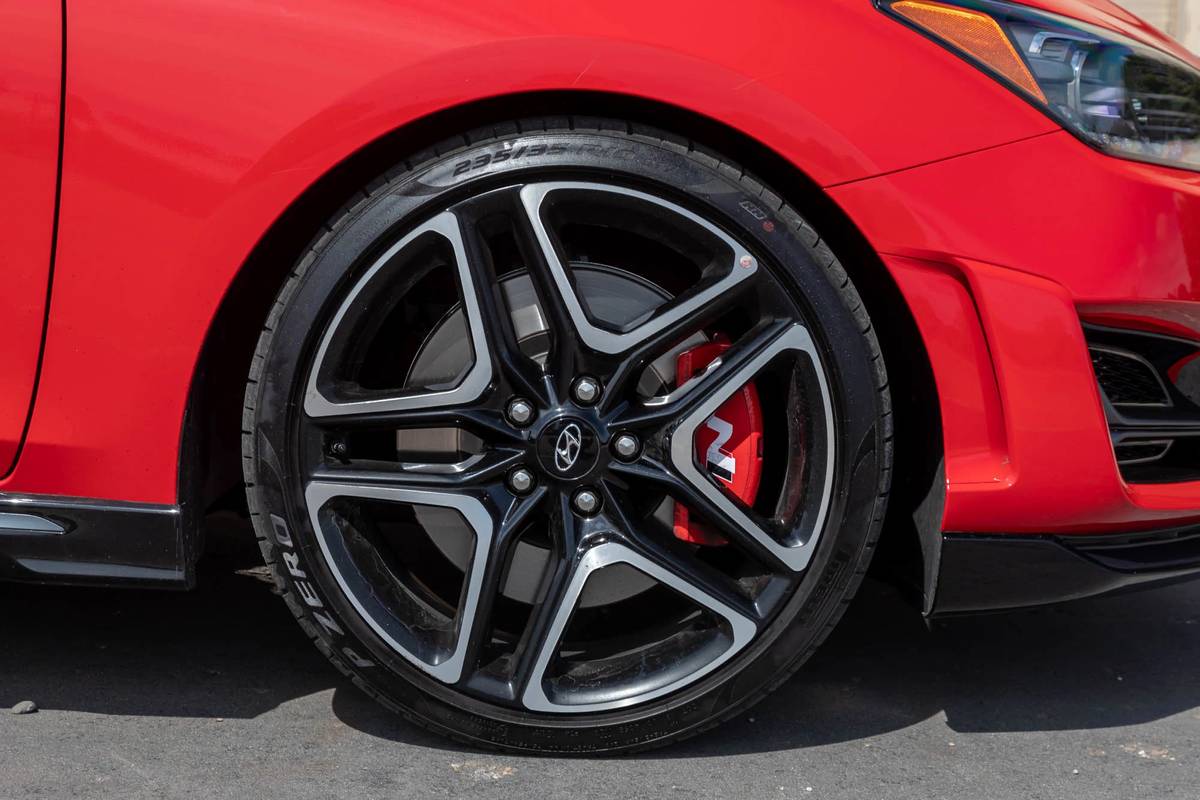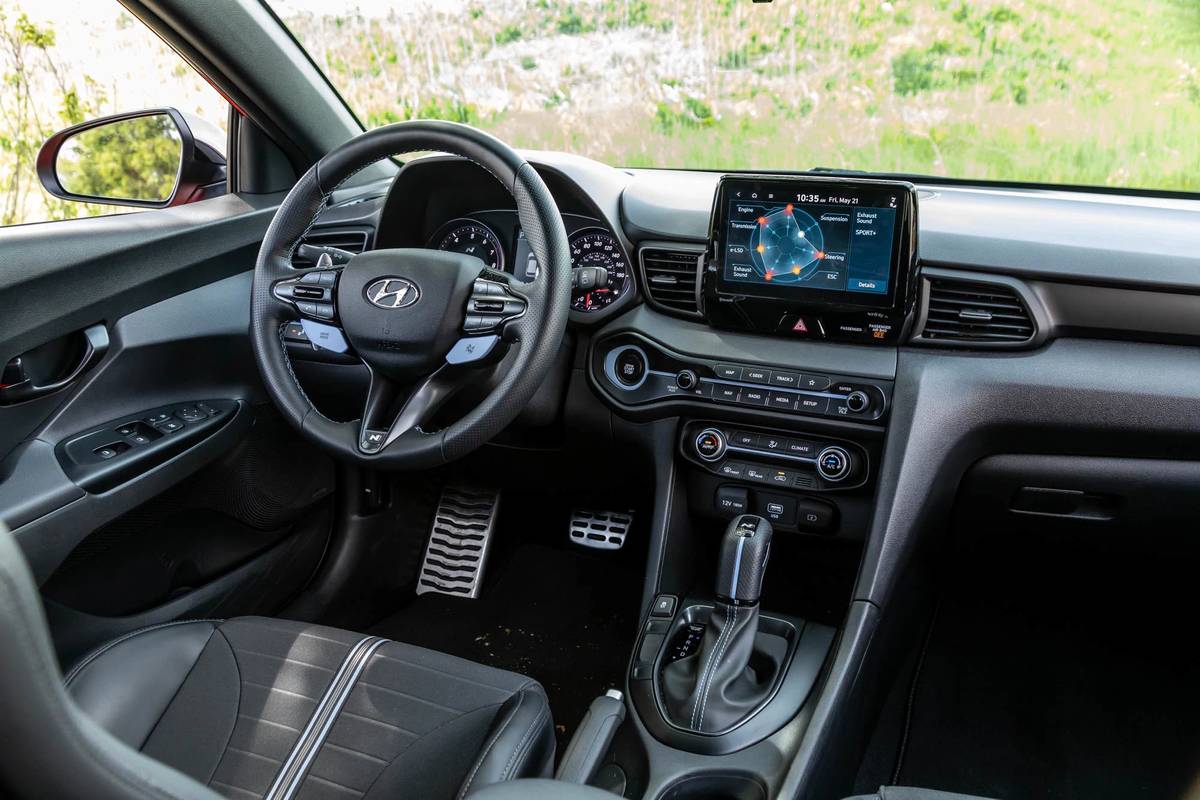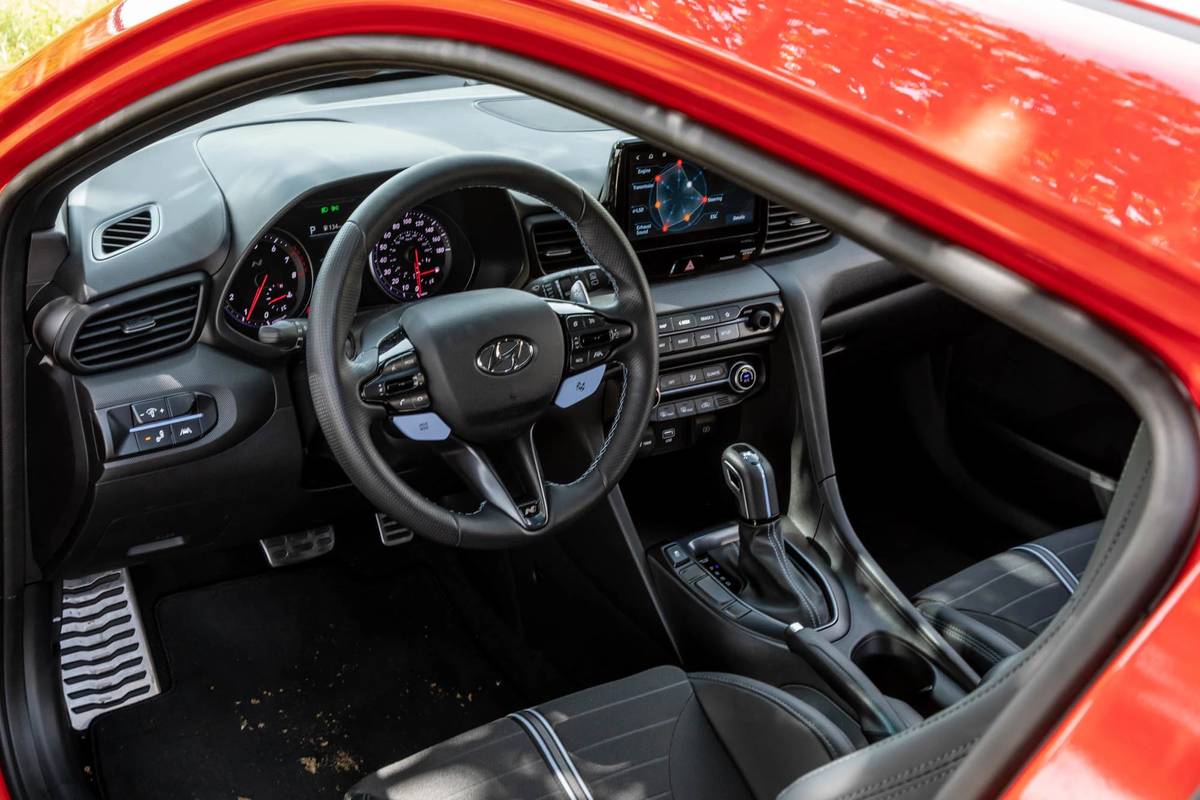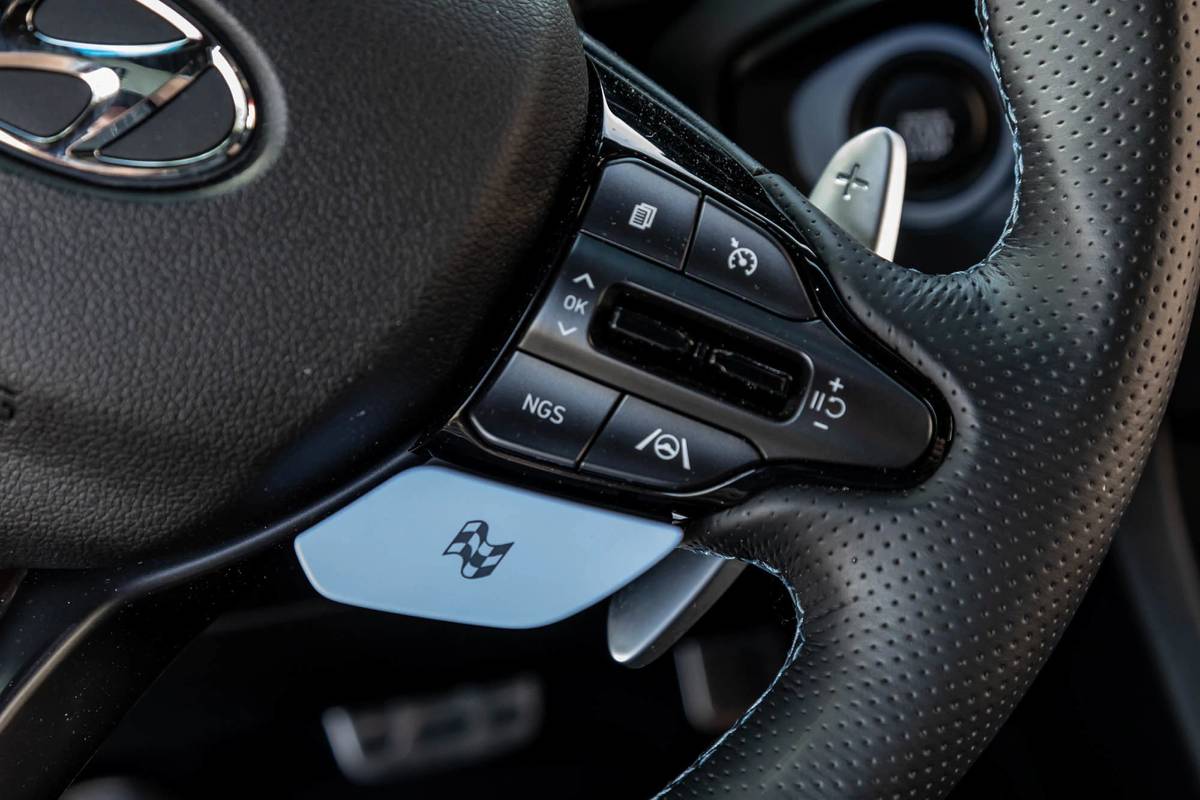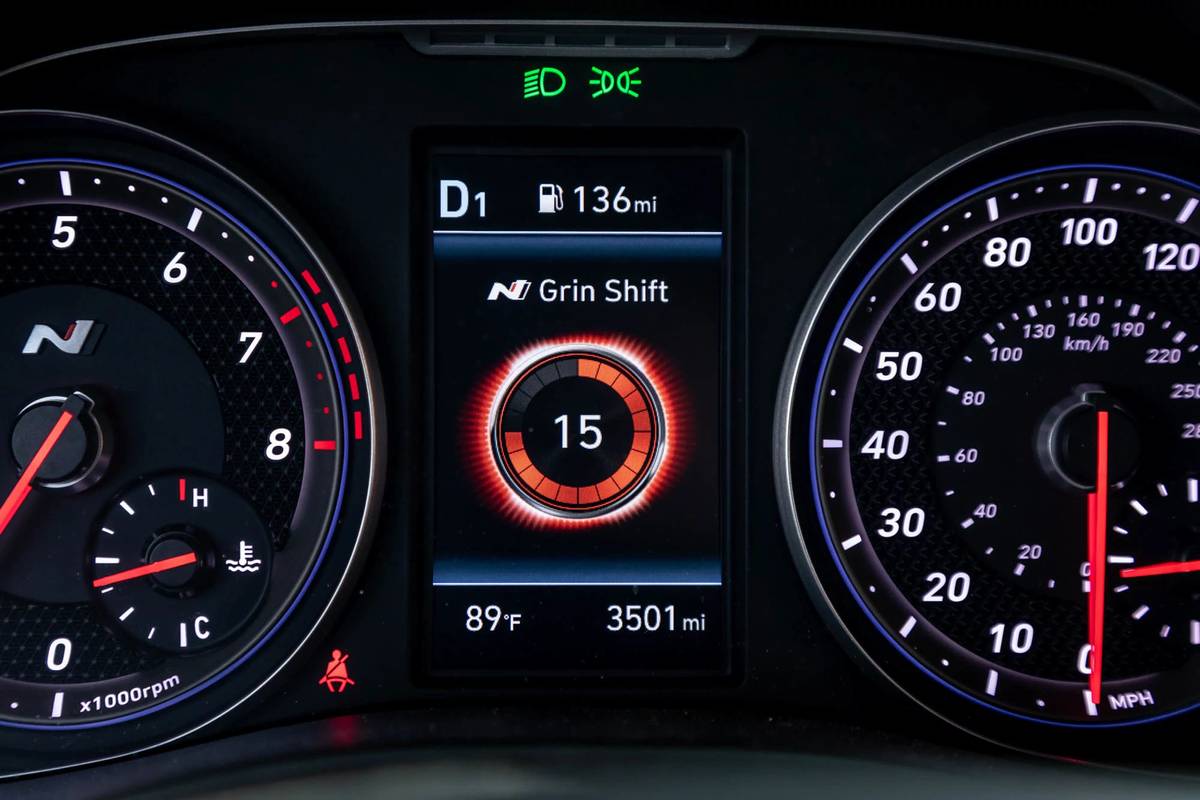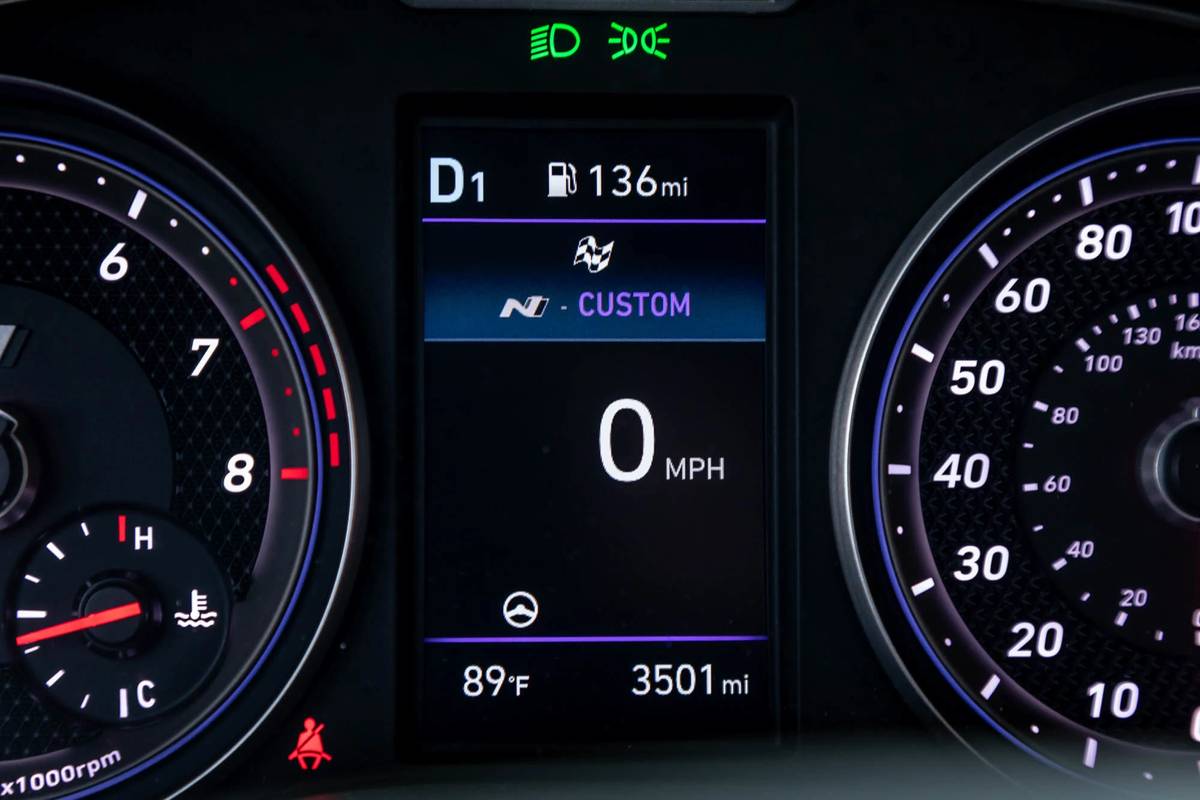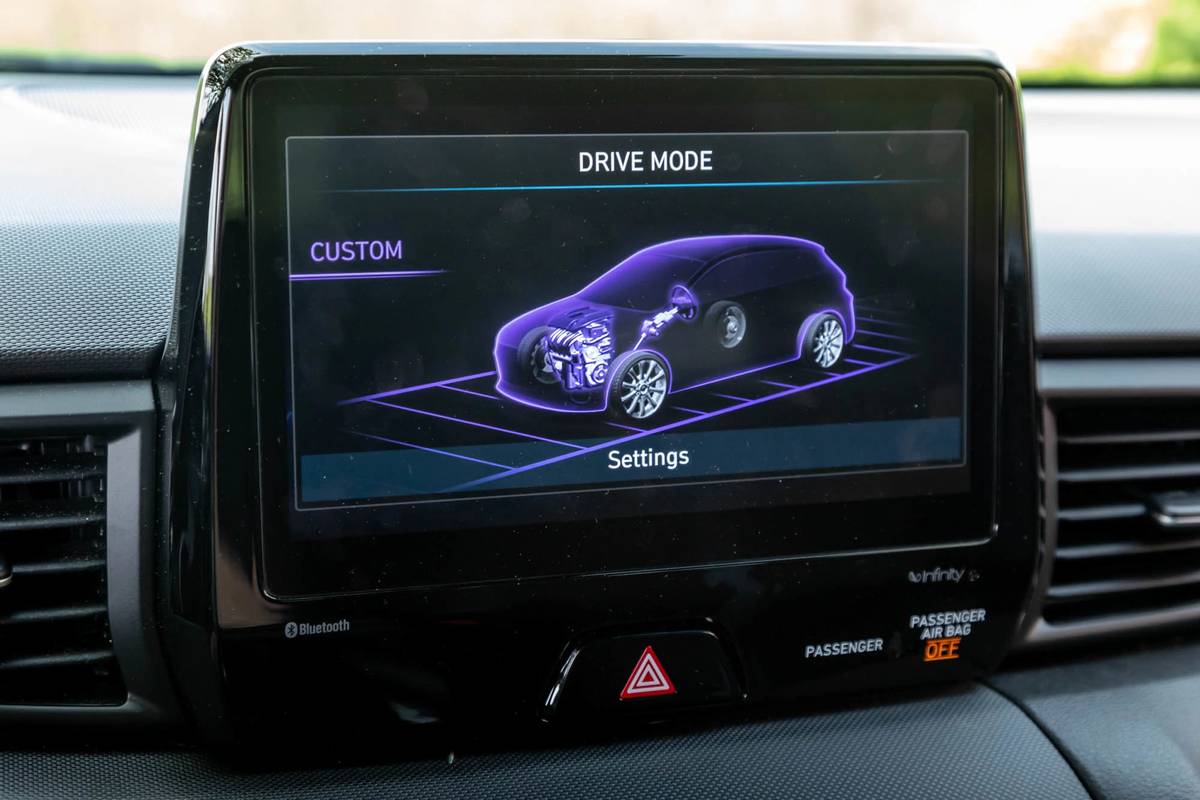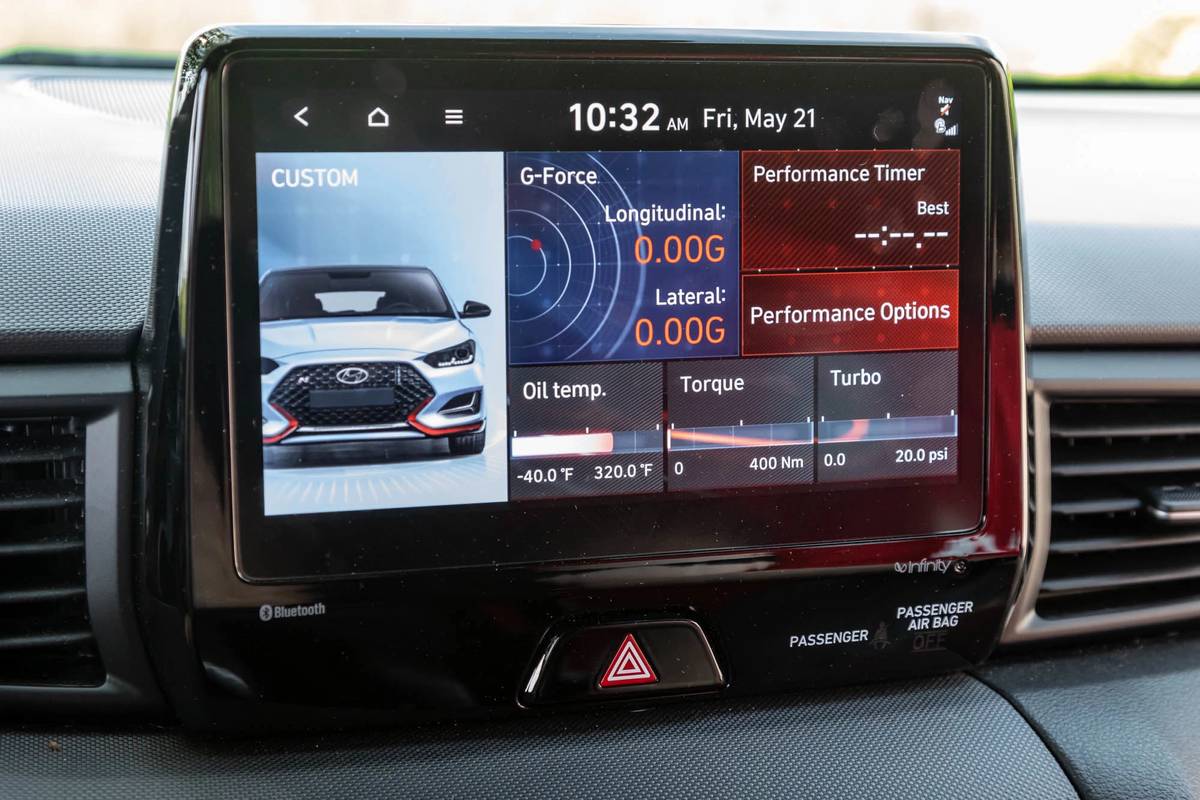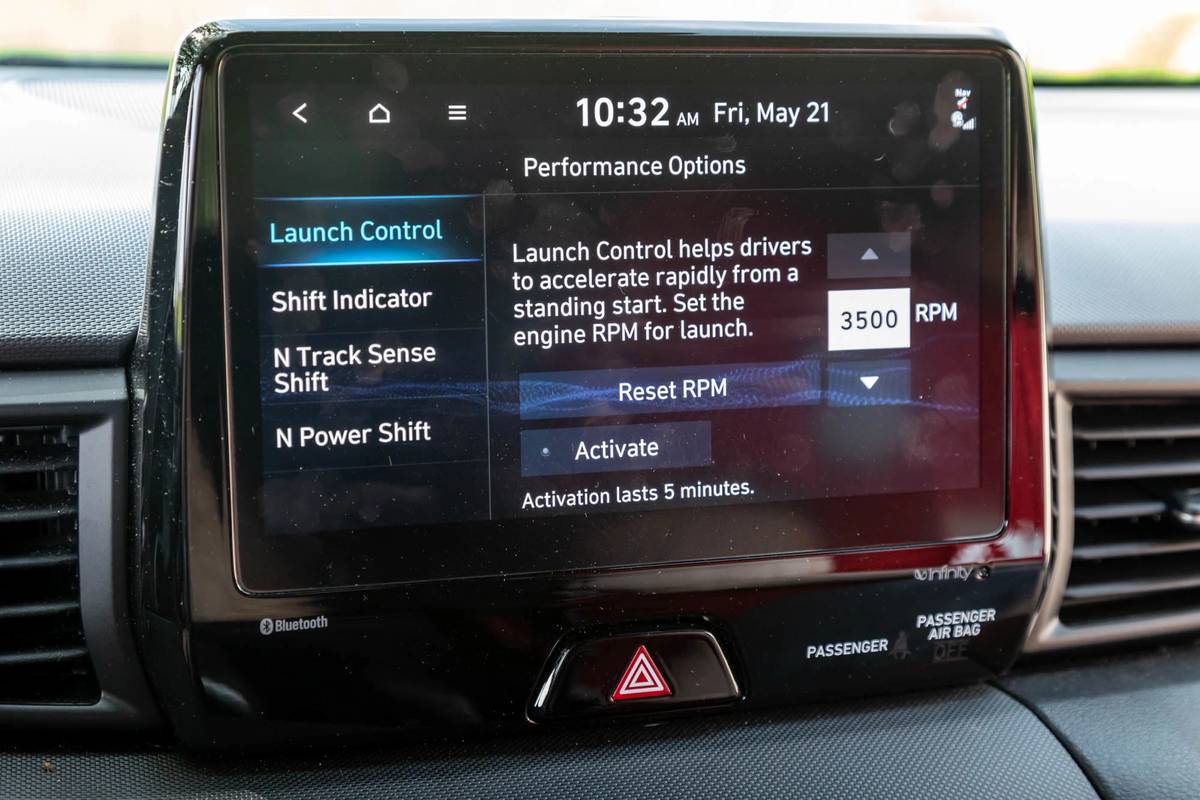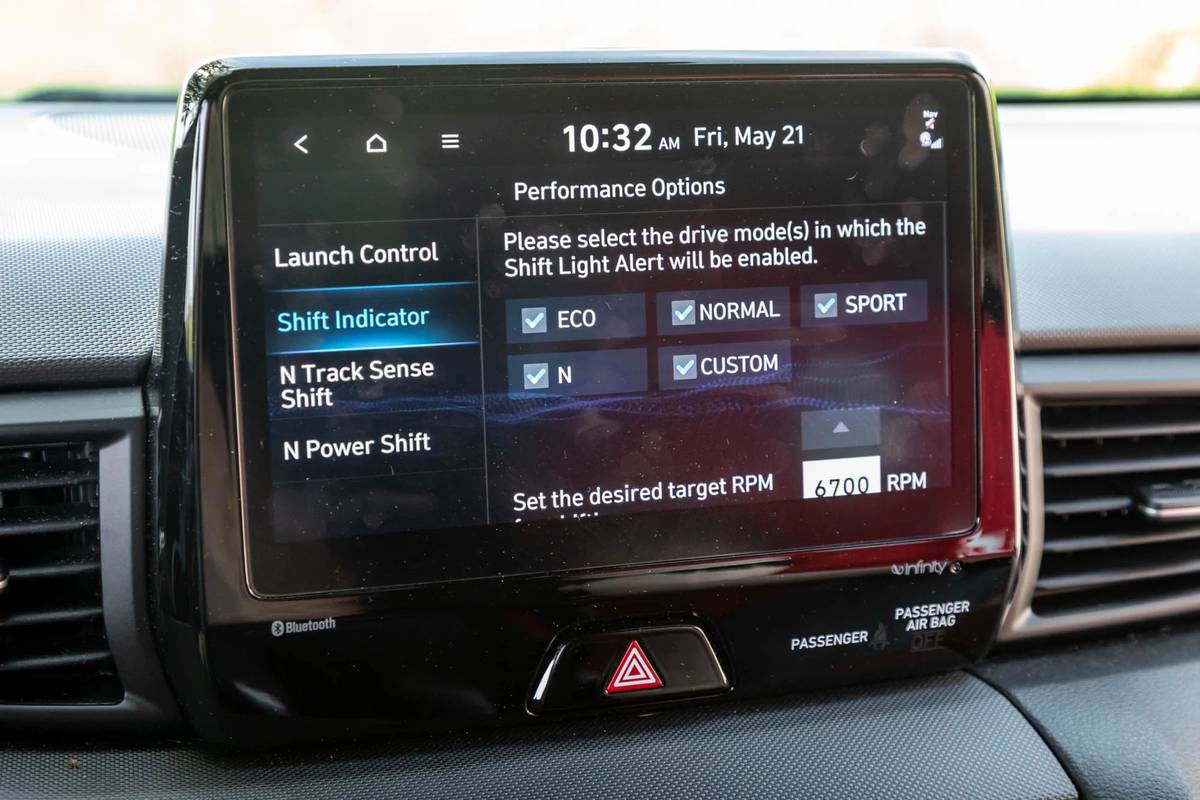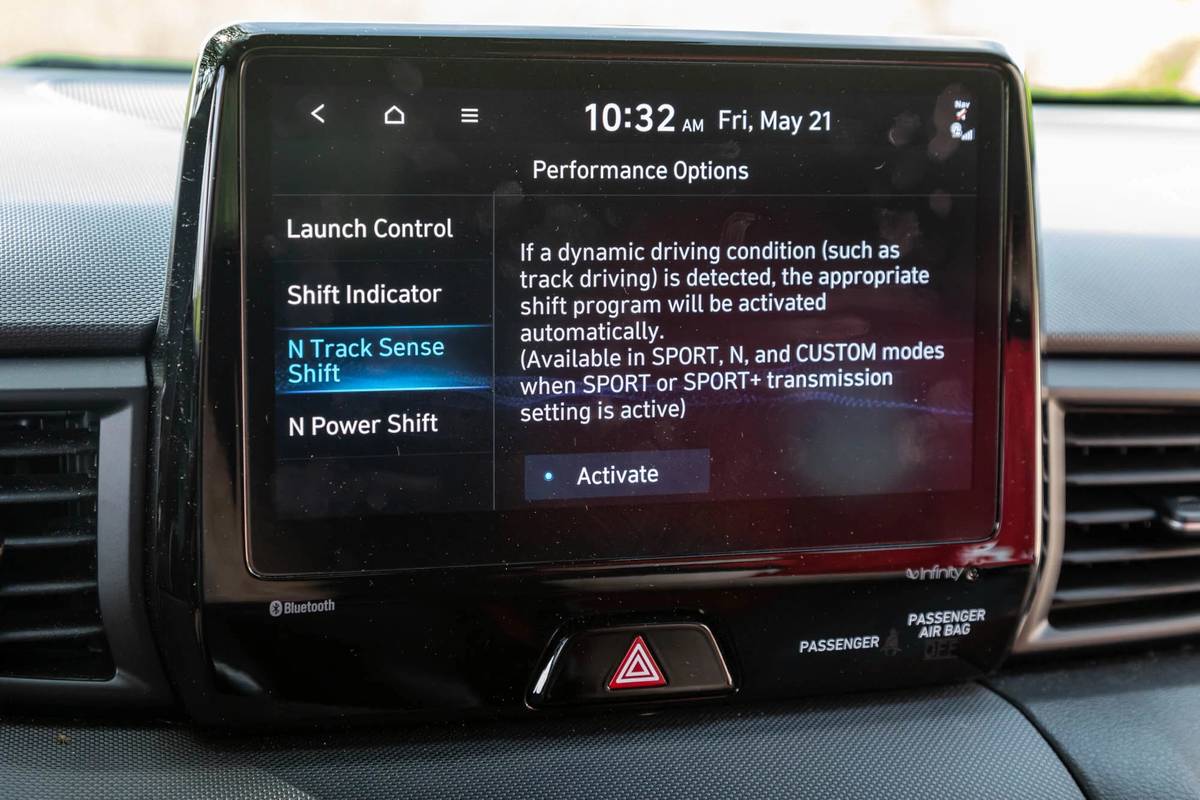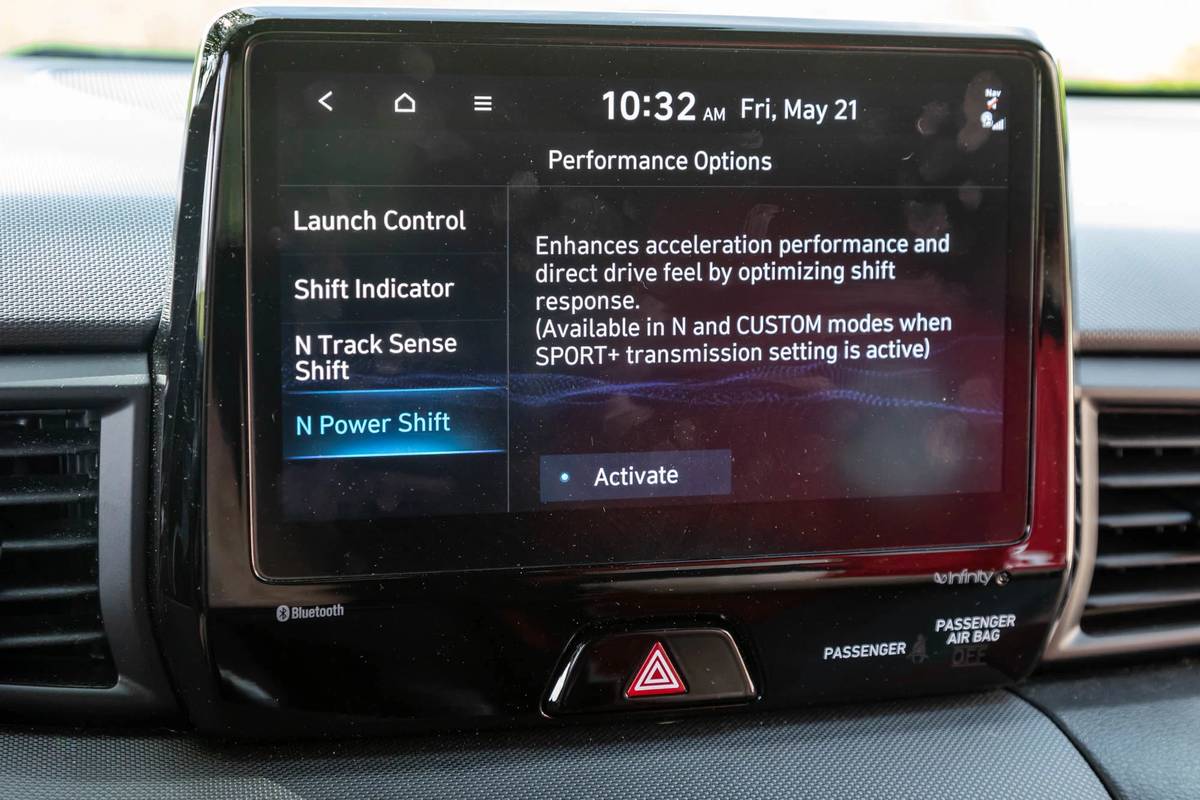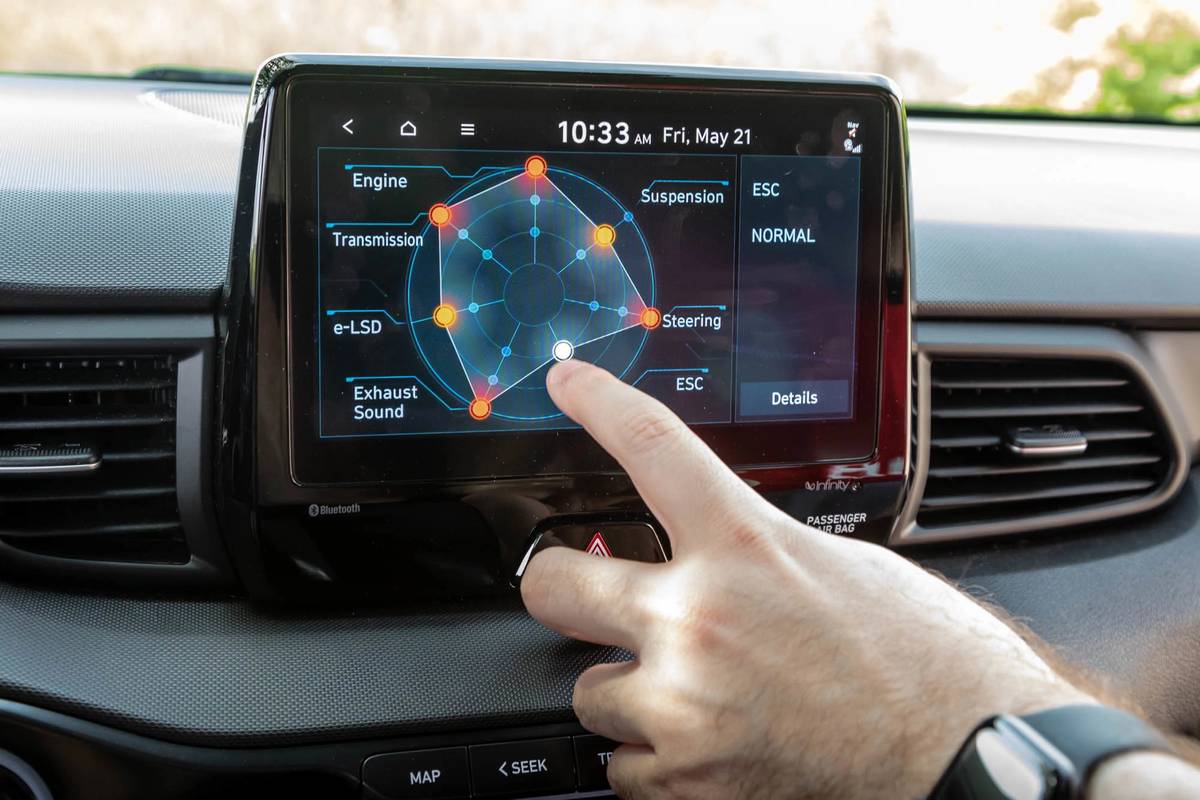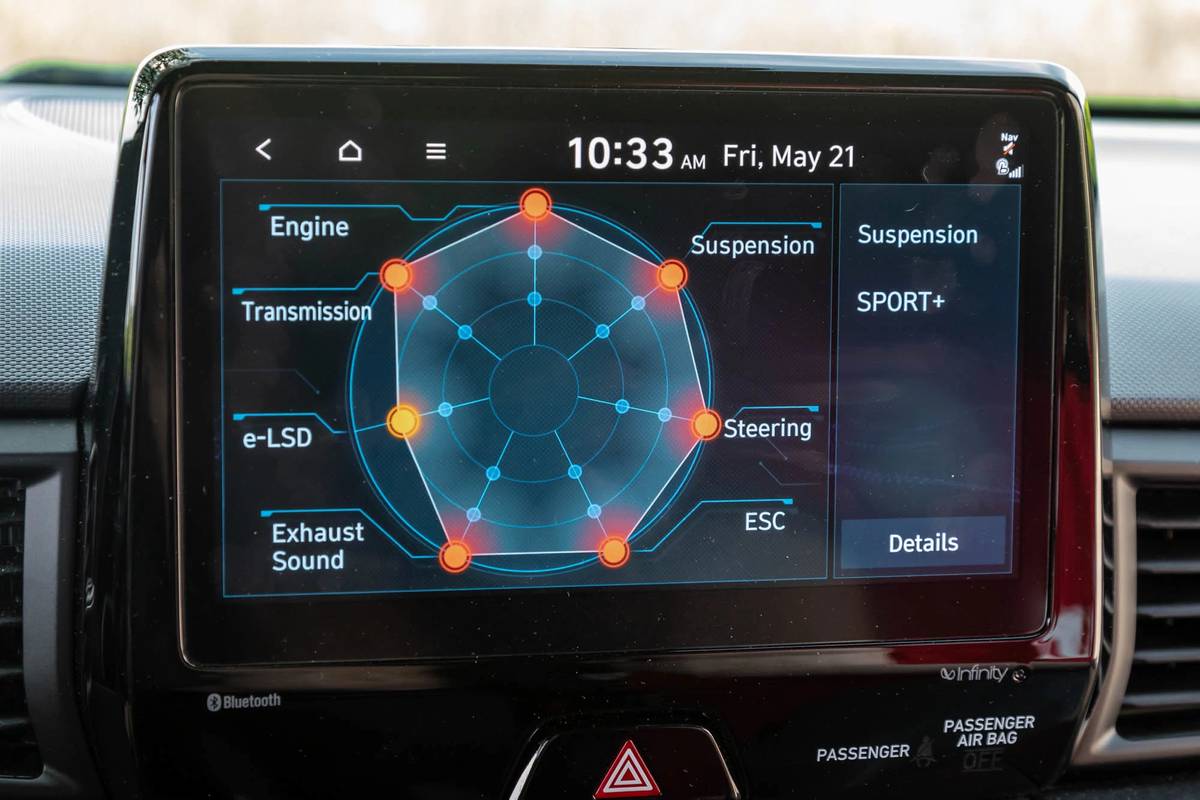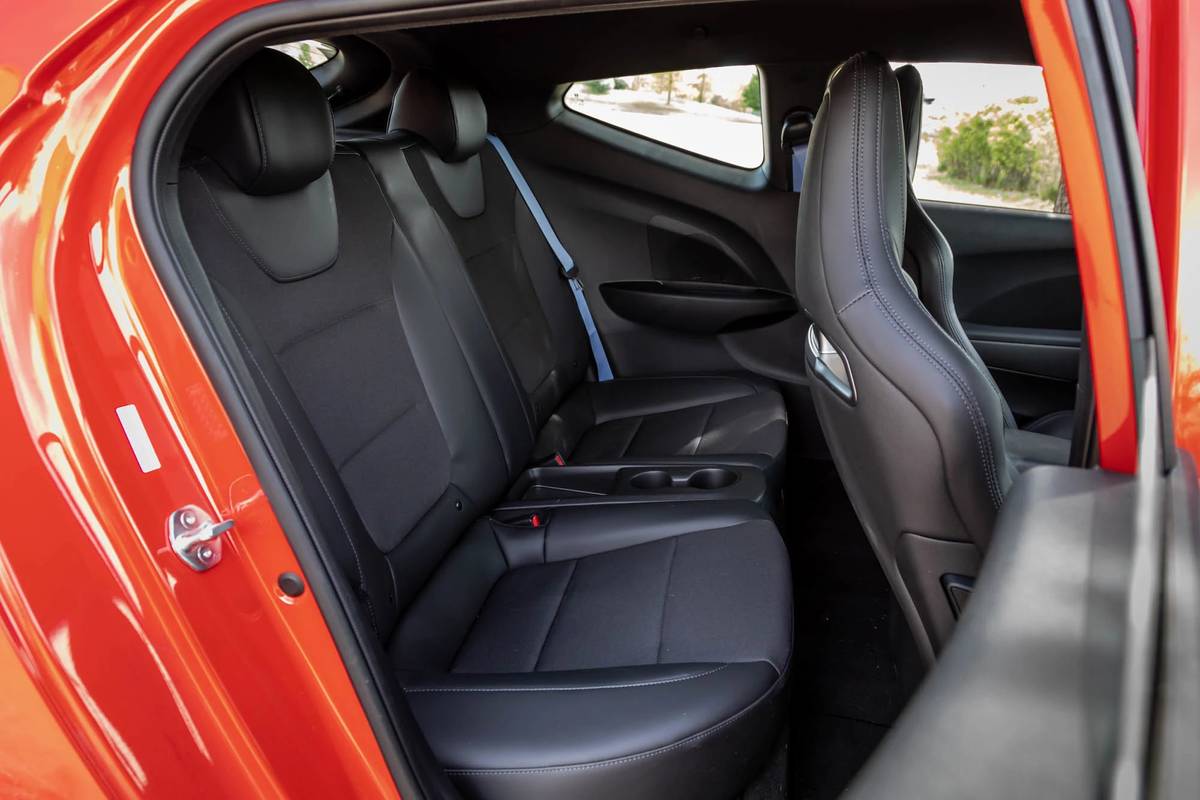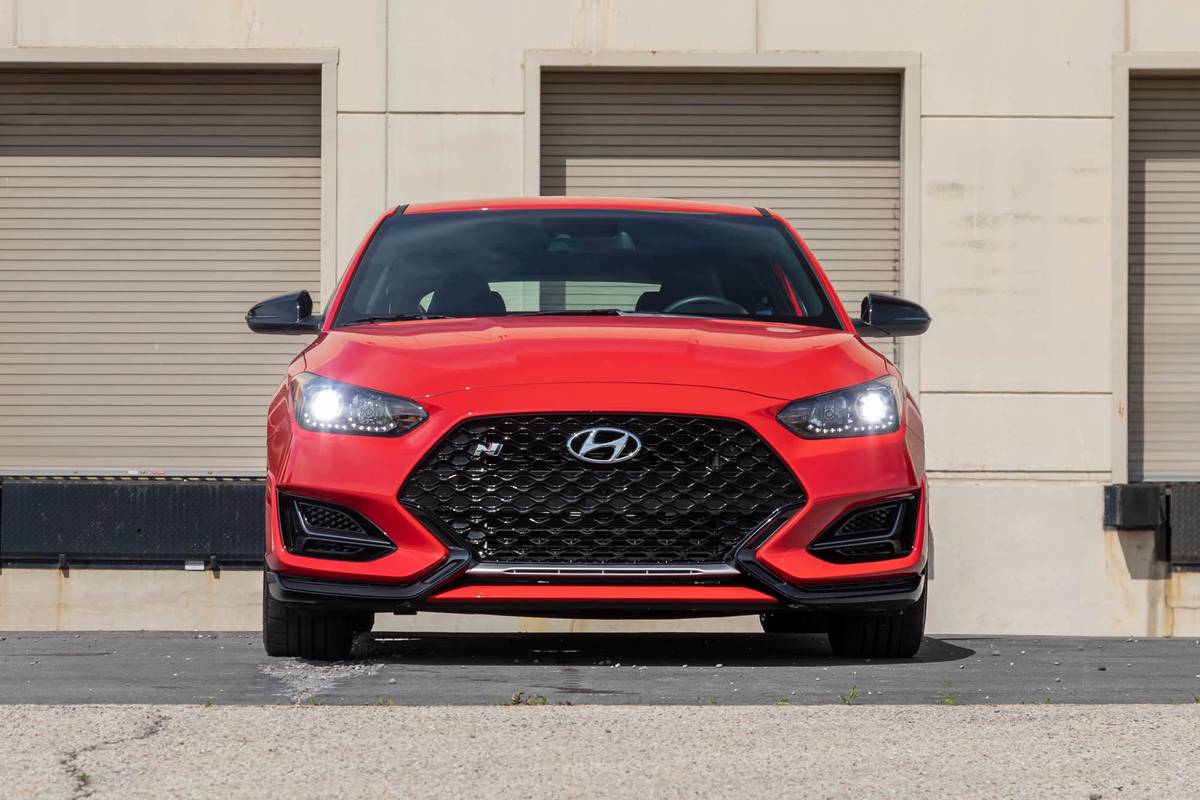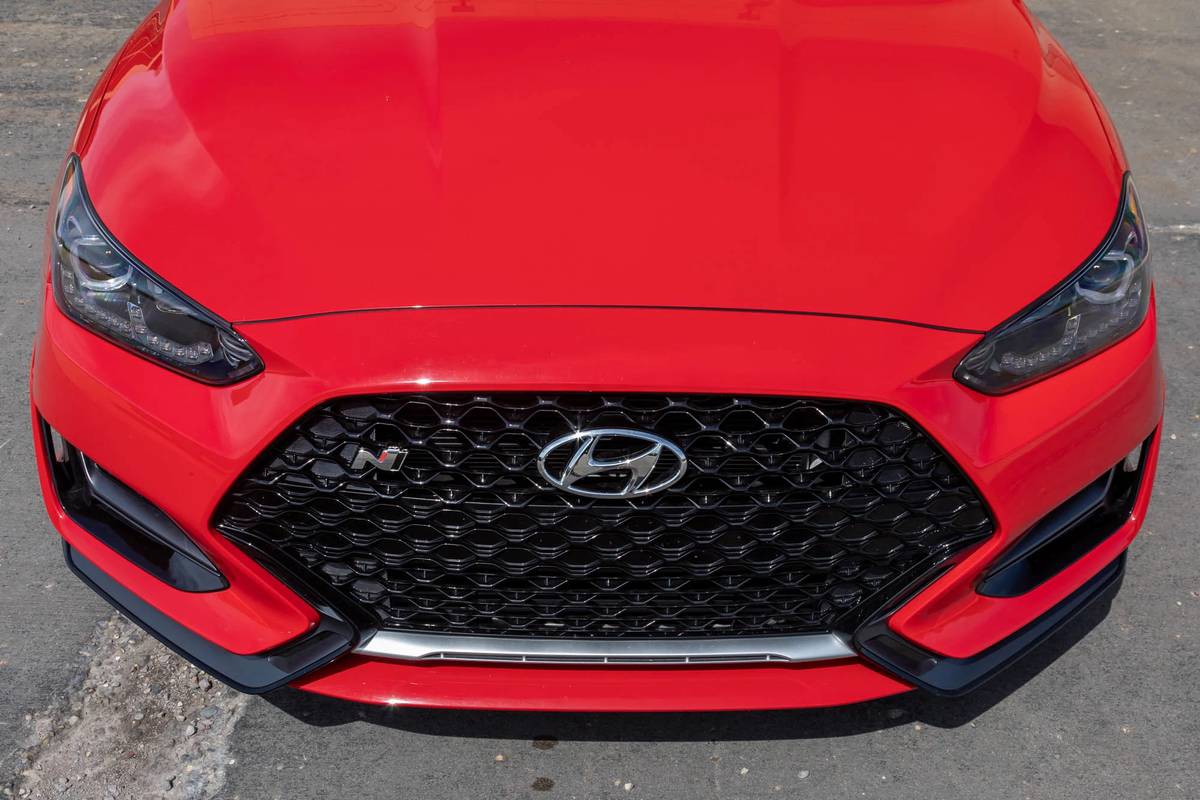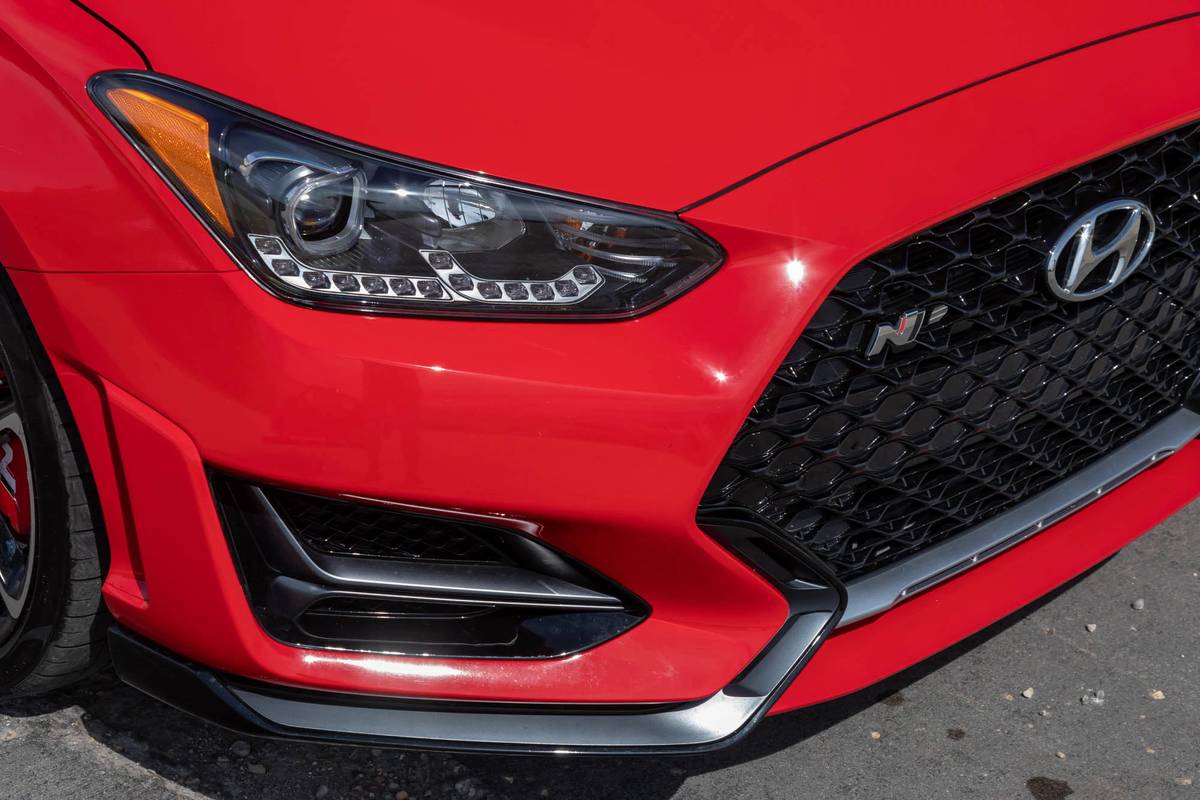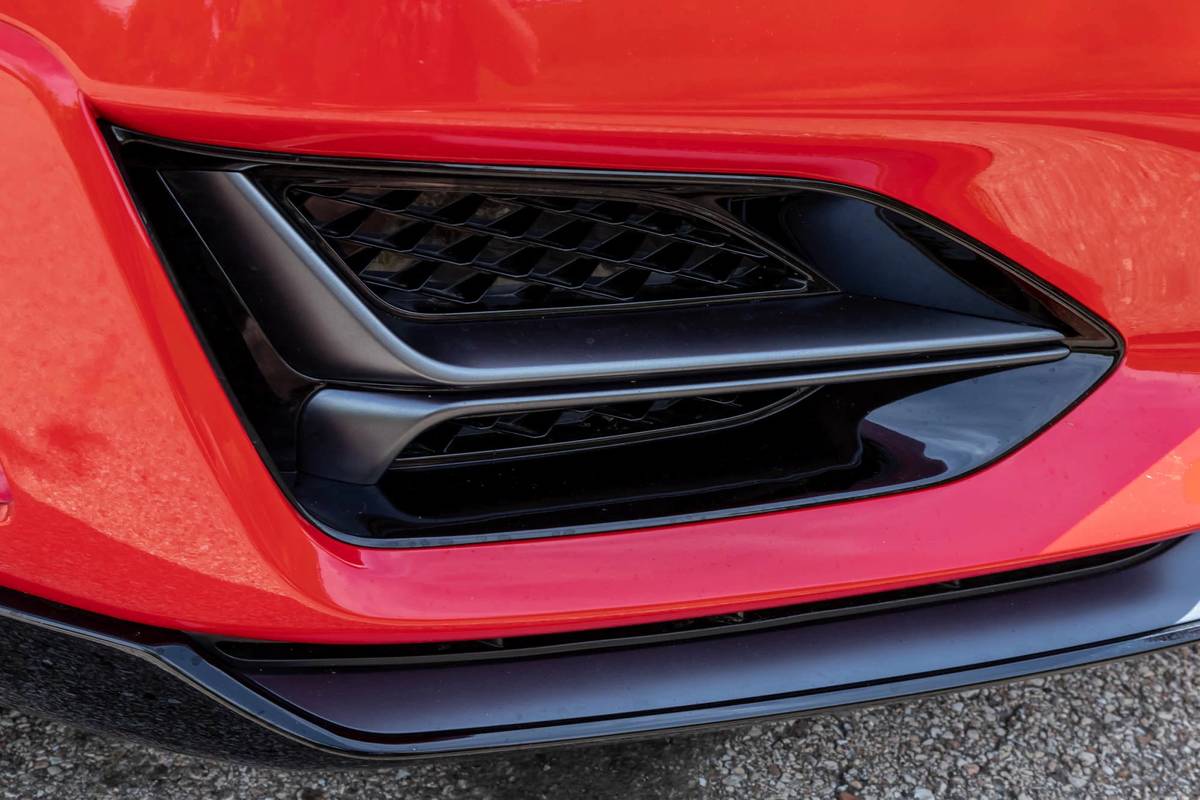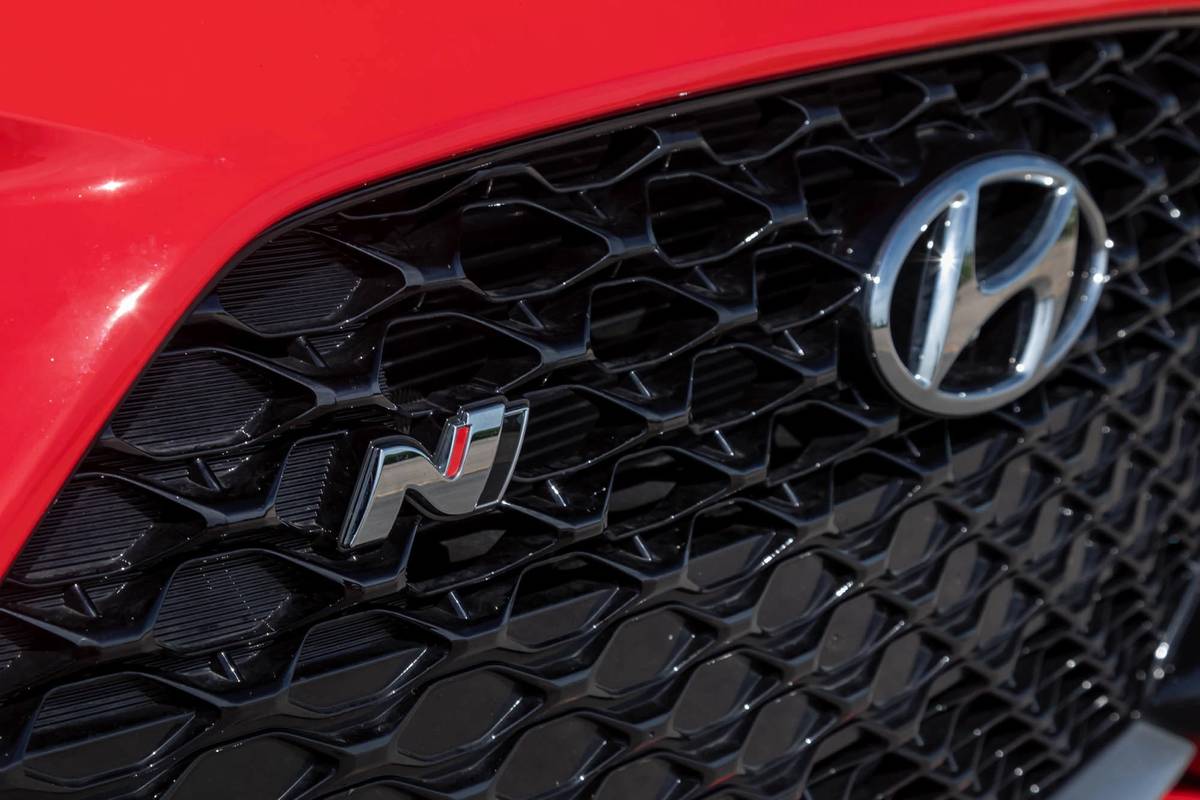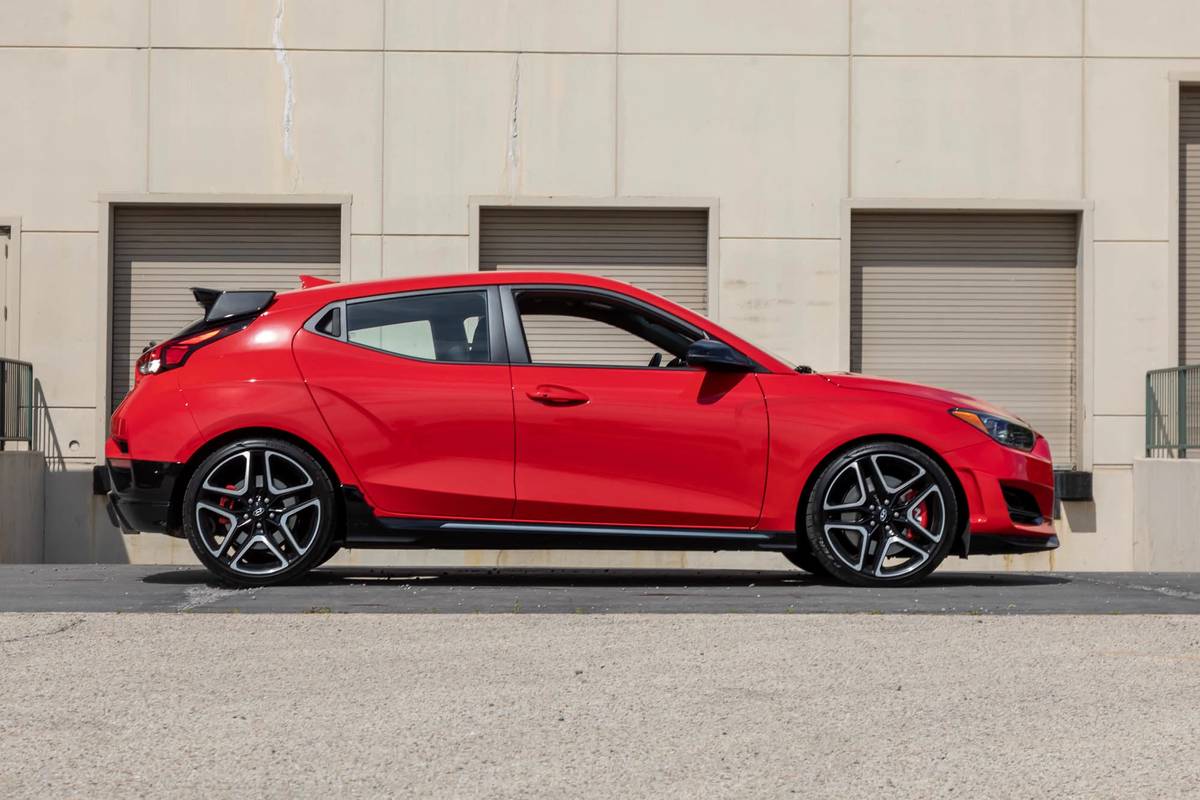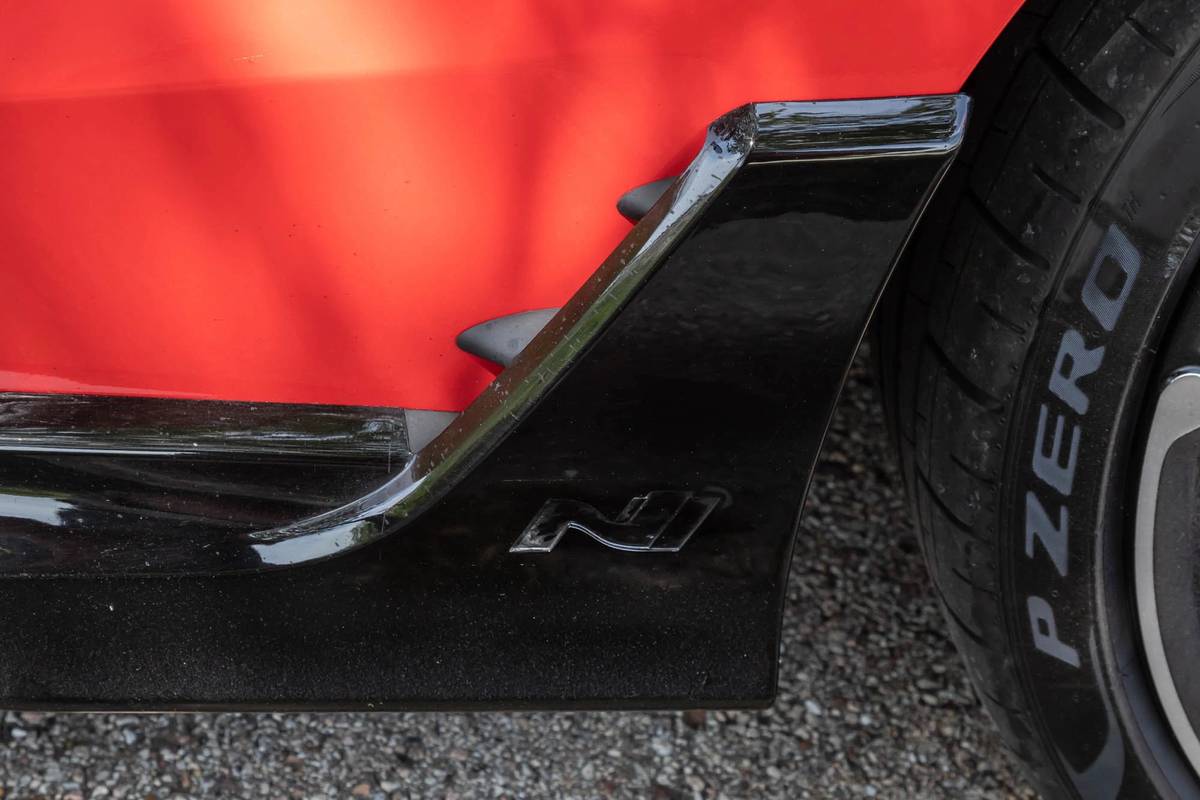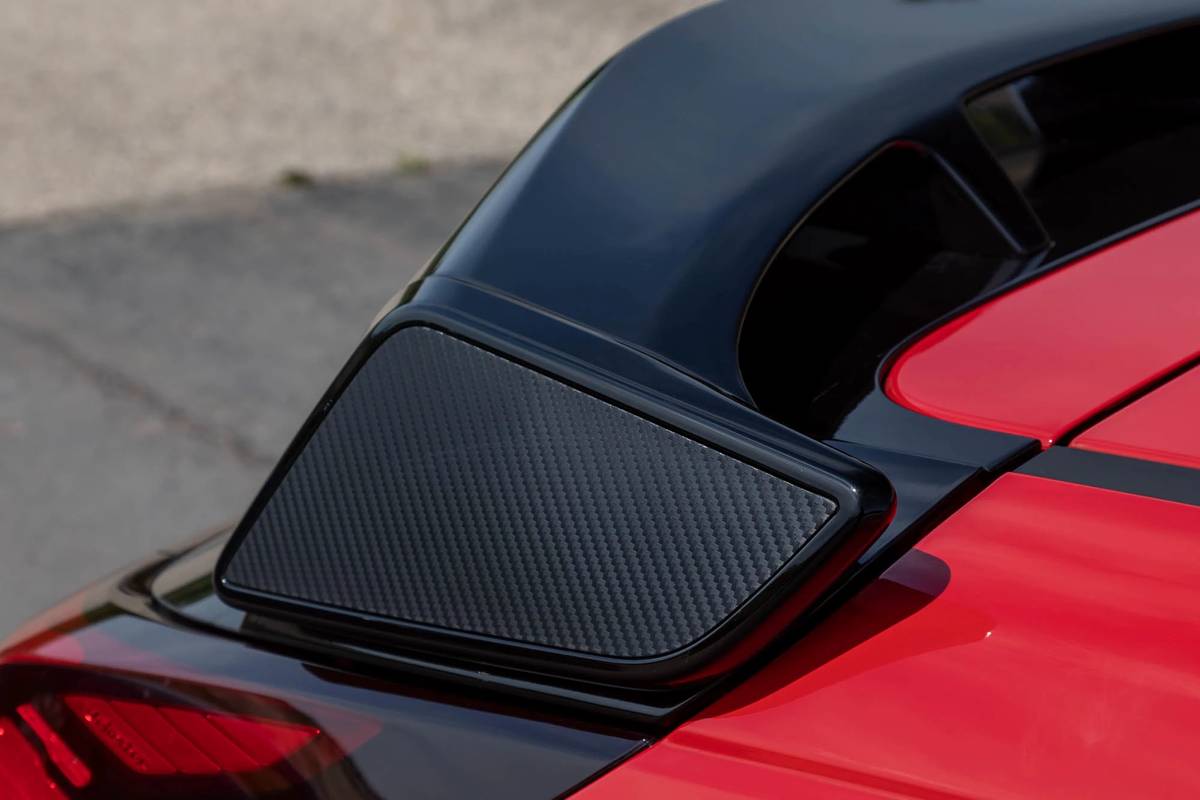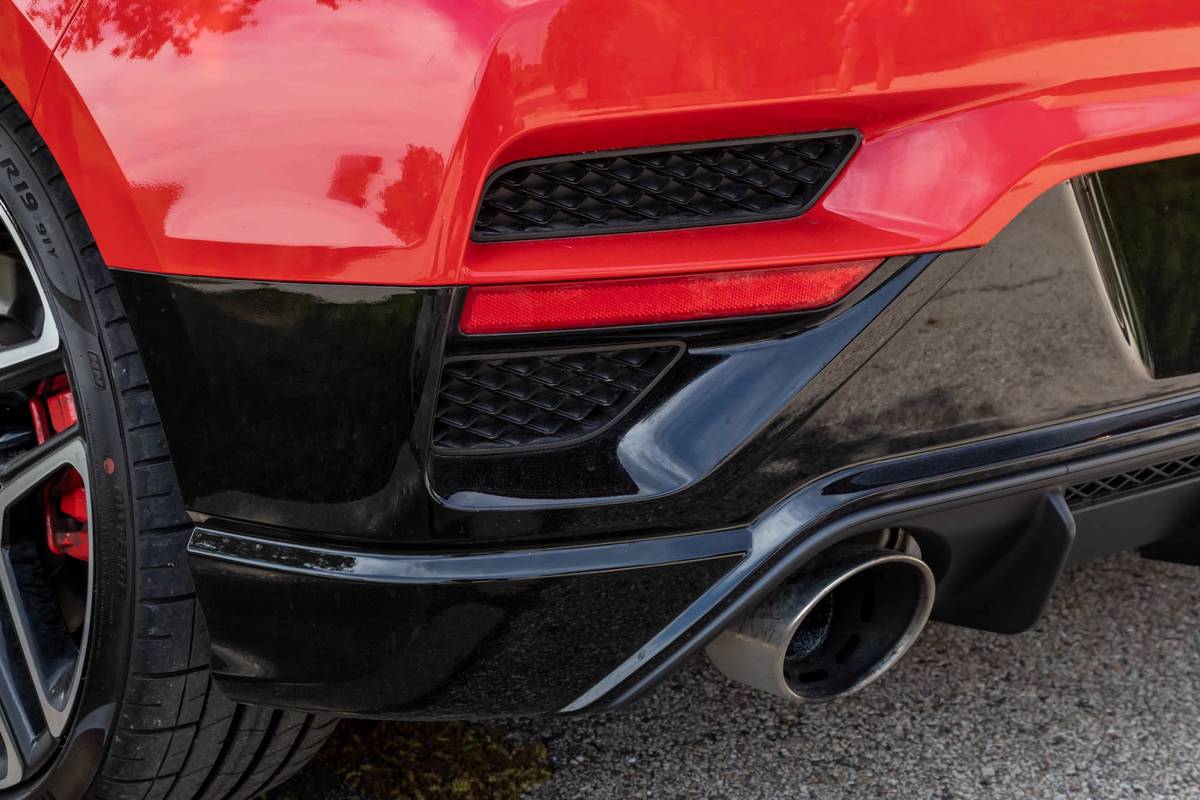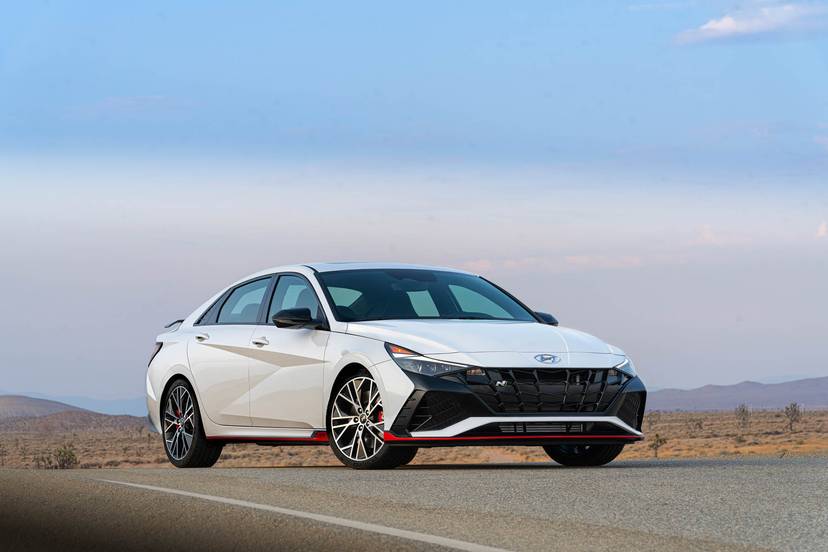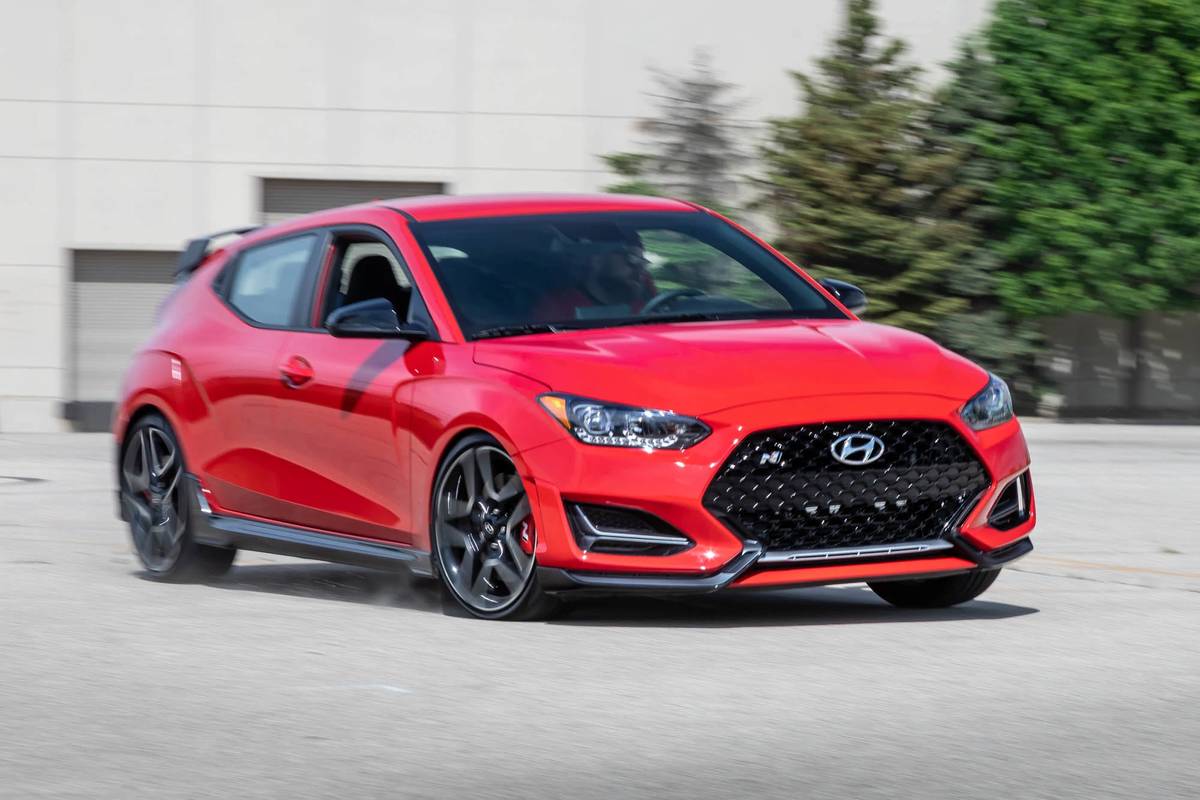
The verdict: The addition of a dual-clutch automatic transmission and newly standard performance features, plus an upgraded interior and additional go-fast goodies, make the 2021 Hyundai Veloster N a hot hatch for everyone.
Versus the competition: Other hatches may be hotter than the Veloster N, but few rival Hyundai’s combination of performance, price and excellent available automatic transmission.
I’m going to spoil the conclusion of this review slightly: I own a 2021 Hyundai Veloster N, which is the high-performance version of Hyundai’s front-wheel-drive Veloster three-door hatchback. (N is to Hyundai as M is to BMW — fitting, because Hyundai hired away the former head of BMW M to lead research and development.) So, yes, I think it’s worth your consideration.
Despite the growing popularity of SUVs (Hyundai is even going to build a Kona N), the Veloster N faces robust competition, including the Honda Civic Si and Type R, the Volkswagen Golf GTI and R, and the Subaru WRX and WRX STi. Prices in this class range from the mid-$20,000s (Civic Si, Golf GTI, Subaru WRX) to north of $40,000 (Civic Type R, Golf R, WRX STi).
The Veloster N sits in the middle of the pack, with a starting price of $33,245, including destination. Besides dealer accessories, the sole available option is a new-for-2021 eight-speed dual-clutch automatic transmission in place of the standard six-speed manual gearbox, a $1,500 premium. Hyundai makes a point of calling it a wet dual-clutch transmission, likely because dry-clutch-based DCTs don’t have a great reputation.
Related: 2021 Hyundai Veloster N: Performance Standard, Automatic Optional
In addition to adding the available automatic transmission, Hyundai made the previously optional Performance Package standard for 2021, making the Veloster N’s standard horsepower figure 275, up from the 2020’s standard 250. Torque is 260 pounds-feet … most of the time. (We’ll get to that.) An electronic limited-slip differential, adjustable exhaust and summer performance tires are also part of the new standard package.
Another major update for 2021 is a set of manual N sport seats up front. Hyundai says the new seats save 4 pounds of weight, and the seatbacks feature an illuminated N logo. The seats really class up the interior, and the light-up logo is simultaneously incredibly corny and incredibly delightful.
My Veloster N is a six-speed manual, and I love it. After driving the new DCT version, I’m even more in love with the Veloster N. Here’s why.
Accessibility Matters
One thing to note about the competitors listed above is that they skew heavily toward manual transmissions. That’s not a complaint; we created an entire holiday to celebrate stick shifts. But it does feel, well … limiting. Honda doesn’t even offer an automatic on either the Civic Si or the Type R. The Subaru WRX STi is also manual-only — and the WRX should be, given how badly Subaru’s continuously variable transmission performs. Volkswagen, at least, has an excellent dual-clutch automatic available for both the Golf GTI and the Golf R.
If you can’t or don’t want to drive a manual car (it’s never too late to learn!) but do want a relatively affordable performance hatchback, before this year you would have probably been looking at a Volkswagen, or maybe a Mini. Now you have another choice.
Performance Matters
The Veloster N’s dual-clutch transmission is great. If you’re simply looking to go as quickly as possible in a Veloster N, it’s the one I’d recommend. It nails upshifts and downshifts, and it never seemed to put a foot wrong. And rather than just building an automatic that did its job well, Hyundai gave the automatic an extra feature: N Grin Shift. The goofily but aptly named feature — activated by a button placed where the manual’s rev-matching feature goes — engages 20 seconds of turbocharger overboost that increases the engine’s torque output from 260 to 278 pounds-feet while temporarily activating the transmission’s sportiest shift program.
In a car this size (the DCT Veloster N weighs just 3,247 pounds, 141 more than the manual), that extra torque is noticeable. In the blink of an eye, it takes the Veloster N’s performance from, “Hey, this is really quick” to “Hey, I’m going how fast?” There’s a mandatory cooldown period between uses — which can be frustrating given how intoxicating the feature is — but not exploding your engine is also a good thing. Hyundai also added programming tweaks to the automatic to make for more aggressive driving. It can detect when you floor the accelerator or when you’re (hopefully) track driving and adjusting the shift programming accordingly.
Even without N Grin Shift, straight-line acceleration is impressive. Hyundai estimates the automatic Veloster N will go from 0-60 mph in 5.6 seconds (the manual is rated slightly slower), but that estimate feels conservative. Other outlets have measured the manual at 5.2 seconds from 0-60 and the DCT at an impressive 4.8 seconds. No matter how quickly you get up to speed, the Veloster N sounds wonderful thanks to its newly standard adjustable exhaust system.
The Veloster N’s EPA-estimated fuel economy ratings are slightly worse for the automatic than for the manual: 20/27/22 mpg city/highway/combined versus the stick’s 22/28/25 mpg. Seems strange given the auto’s two extra gears, but that transmission does come with at least one additional benefit: At highway speeds, the automatic cruises in 8th gear at roughly 2,000-2,200 rpm. In the manual, which has only six forward gears, those same speeds result in revs in the much noisier 2,700-3,000 rpm range. On a longer trip, the automatic’s reduced noise output was most welcome.
The Veloster N’s fuel economy ratings are on the lower end for the class, it only drinks premium gas and it’s very difficult to drive with efficiency in mind. Fuel economy isn’t likely to be a primary concern for Veloster N buyers, but know that this hatch isn’t going to save you money at the pump.
For all the praise I’ve given the automatic, I am still happy with my choice of the manual Veloster N. Is it the best manual transmission in the class? Nope; that award probably goes to the Civic Type R, but the Veloster N’s is quite good. The clutch pedal is lighter than I prefer, and the shifter’s throws could be snappier, but after a few months of ownership I’m very pleased with it. And as good as the automatic is, the connection you feel with the car when driving the manual is tough to beat.
The Rest of the Driving Experience
Ride and handling are consistent across both versions of the Veloster N: Handling is impeccable, the ride is atrocious.
Let’s start with ride quality, or rather the lack thereof. Since I bought a Veloster N, I obviously didn’t consider this a deal-breaker, but its ride is harsh — shake your kidneys harsh. Bounce out of your seat over a pothole harsh. Though its shock absorbers are adaptive and computer controlled, the suspension tuning that helps the Veloster N feel like it’s cornering on rails also leads to solid bumps and thumps, and the low-profile tires wrapped around 19-inch wheels don’t have any cushioning to spare. I read a Veloster N forum about aftermarket wheels, and it seemed like everyone was downsizing to 18-inch wheels. I get it; if or when I need a new set of summer tires, I’ll probably do the same.
The reward for that harsh ride quality, though, is some of the best handling I’ve experienced in a sub-$35,000 car. Cornering is flat; I never feel like I’m close to running out of grip in corners, and the electronic limited-slip differential keeps understeer at bay. One thing the LSD can’t always quite contain is the Veloster N’s ability to spin its front wheels when accelerating from a stop. Hit the go-pedal too hard and you’ll light up the tires, Scooby Doo in place for a moment, then take off.
Better Interior
The Veloster N’s interior is improved for 2021, mostly thanks to the new N Light sport seats. Aesthetically, they help break up the once-dreary, mostly black interior, and the Performance Blue seat belts are still there. More importantly, the seats are comfortable and do a good job holding occupants in place against harsh lateral forces. Both the driver and passenger seats are manually adjustable, save for power lumbar adjustment for the driver. I wouldn’t mind a bit more adjustability, especially with the seat’s fore and aft positions. The most ideal seating position I can find feels just a touch too close to the wheel for my liking, but the next notch backward feels too far away.
The backseat … exists. Like the Civic Type R, there are only two seats in back, with a permanent hard plastic divider bearing cupholders in between. You could fit adults back there for a short trip, but legroom and headroom are lacking. Access is limited, as well, with only a single rear door on the passenger side. The backseat is at least roomy enough to accommodate my 70-pound dog.
Interior quality isn’t great, with lots of hard plastic, because this is still a Veloster at heart. Some higher-quality materials would be welcome, but they would likely drive up the cost, and I’d rather Hyundai focus on honing the Veloster N’s performance. One exception: Veloster Ns in other markets get heated front seats. Gimme, Hyundai.
The 8-inch touchscreen is easy to use, with crisp graphics and standard Apple CarPlay and Android Auto. The screen looks to be on the smaller side to me, but that’s mostly because I know Hyundai has larger screens in other vehicles.
The touchscreen also houses the N Mode performance pages, allowing the driver to adjust things like suspension firmness, traction control, exhaust note and more via a nifty spider graph. These pages also include the launch control and on/off toggles for the automatic transmission’s extra settings.
Safety
The 2021 Veloster N also adds newly standard advanced safety features, including forward collision warning with automatic emergency braking, lane-keeping assist and lane follow assist, blind spot warning and avoidance assist with rear cross-traffic alert, and a driver attention monitor. The safety features are welcome, though the lane-keeping and lane follow assist can sometimes lead to a bit of pinballing from lane edge to lane edge. Neither the manual nor the automatic Veloster N have adaptive cruise control, either, though admittedly that could be difficult to have on a manual car.
The 2021 Veloster and Veloster N earned top ratings in Insurance Institute for Highway Safety crashworthiness tests, and the N includes the acceptable-rated LED headlights standard. Though it shares the regular Veloster’s top ratings for vehicle-to-vehicle front-crash prevention, the Veloster N hadn’t been evaluated for vehicle-to-pedestrian collision avoidance as of publication. The Veloster N is also awaiting testing by the National Highway Traffic Safety Administration as of this writing.
More From Cars.com:
- I Bought a 2021 Hyundai Veloster N
- 2020 Most Fun-to-Drive Car of the Year
- Every Sports Car Needs This Button From the Hyundai Veloster N
- 2022 Hyundai Ioniq 5 U.S. Specs Revealed, Included 300-Mile Range
- Hyundai’s Kona Gets Racier With 2022 Kona N
Which Veloster N Should You Buy?
Since I’ve bought one, obviously you should, too. But which one? Again, it all comes down to what you do or don’t want. Do you want to go as fast as possible? Are you planning on doing serious track driving? Do you just not want a stick shift? Go for the automatic. If you’re willing to sacrifice a little hustle for a more connected and satisfying driving experience, on the other hand, you should pick the manual.
One last thing to think about when making a purchase decision: How do you want your car to look? I’m not going to wax lyrical about the Veloster N’s “flowing lines” or anything; you can look at the photos yourself. I’ll only say there’s something about hot hatches and kind of out-there styling; just look at the Civic Type R and Mini John Cooper Works GP. At the other end of the spectrum are the buttoned-up stylings of the Volkswagen Golf GTI and Golf R.
The Veloster once again occupies a nice middle ground when it comes to appearance. Get it in Performance Blue, like I did, and the Racing Red accents that are part of the N’s signature styling really pop (same with the black or white exterior colors). Want more of a sleeper look? Get it in Racing Red, like the automatic we tested, and you’ll have a slightly more conservative appearance overall.
I don’t think you can go wrong with any choice when it comes to the Veloster N, especially given the only choices you really have are transmission and paint color. It’s a delight to drive.
Related Video: 2019 Hyundai Veloster: First Drive
We cannot generate a video preview.
Cars.com’s Editorial department is your source for automotive news and reviews. In line with Cars.com’s long-standing ethics policy, editors and reviewers don’t accept gifts or free trips from automakers. The Editorial department is independent of Cars.com’s advertising, sales and sponsored content departments.

































